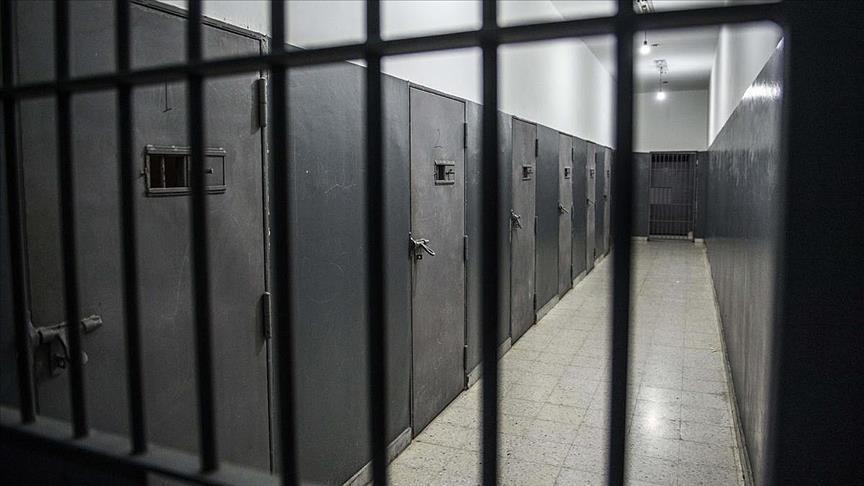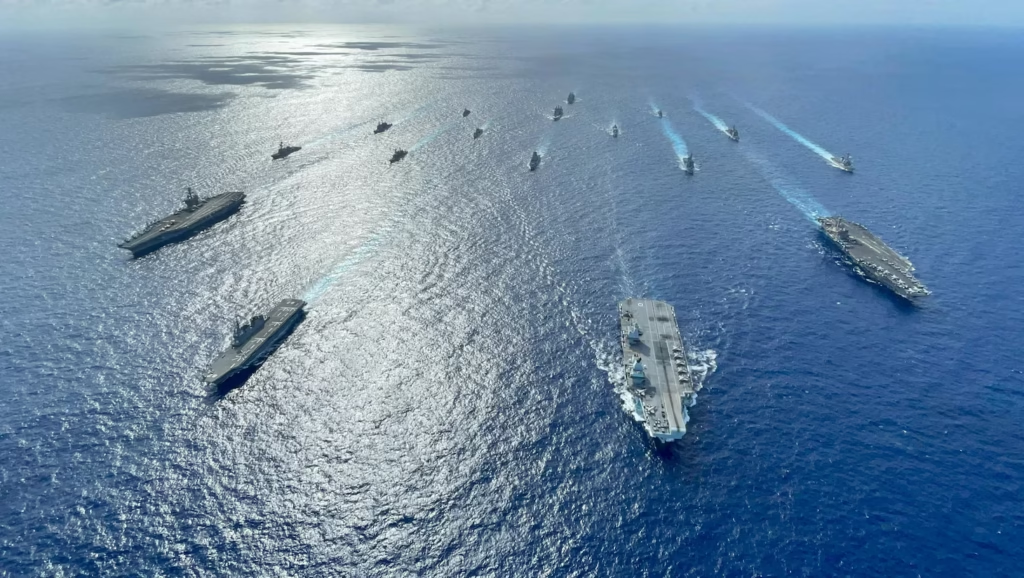
The United States is gearing up for an unprecedented military campaign against Latin America’s drug cartels on two fronts simultaneously – one zeroing in on cartel-linked networks entrenched in Venezuela, and the other taking aim at Mexico’s powerful cartels on their home turf.
Evidence of this two-pronged “cartel war” is mounting in plain sight. A massive U.S. troop buildup in the Caribbean signals that Venezuela is in Washington’s crosshairs, while in Mexico, U.S. officials are openly weighing direct military strikes against cartels despite Mexico’s vehement objections. Intelligence agencies have spent the past year quietly laying the groundwork – from mapping drug networks to vetting strike targets – for what increasingly looks like a bold and simultaneous offensive.
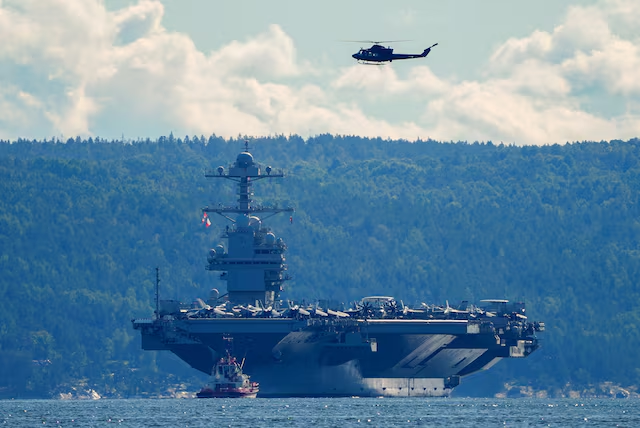
The drums of war are echoing from Caracas to Sinaloa, as Washington makes the case that to defeat the cartels’ deadly reach, it must confront them at both source and distribution points.
Below, we examine the troop movements, covert preparations, and strategic logic that point to a looming two-front war against the cartels.
Caribbean troop buildup
All signs indicate that Venezuela – ruled by Nicolás Maduro, whom U.S. officials accuse of running a “narco-state” – is a primary target of the coming crackdown. Over the past few months, Washington has staged the largest U.S. military deployment in the Americas in decades, concentrating overwhelming force in the Caribbean just off Venezuela’s coast. In August 2025, the U.S. began pouring naval and air assets into the region, ostensibly for an “enhanced counternarcotics” mission.
By early autumn, this build-up had grown into a formidable armada: at least eight warships (including an aircraft carrier strike group) and a nuclear-powered submarine are now arrayed in the Caribbean. The Navy even redeployed an amphibious assault ship with 800 Marines back to the region, providing capability to launch helicopters, MV-22 Osprey tilt-rotors, and amphibious landing craft – a clear sign that inland operations are anticipated.

This military posturing goes beyond ships at sea. The Pentagon has quietly upgraded strategic bases in U.S. territories near Venezuela, turning them into forward staging grounds. A Reuters investigation revealed new construction at the long-defunct Roosevelt Roads naval base in Puerto Rico – clearing runways, refurbishing taxiways, erecting tents and radar systems – all consistent with preparations for sustained combat operations.
Similar upgrades are underway at airports in Puerto Rico and St. Croix, just 500 miles from Venezuela. Military analysts say these sites could be used to launch strikes inside Venezuela at a moment’s notice. Indeed, the White House has acknowledged that President Donald Trump is fulfilling his campaign vow to “take on the region’s drug cartels”, touting his “unprecedented action to stop the scourge of narcoterrorism” threatening American lives.
Already, U.S. forces have begun shooting to kill. Since early September, the U.S. military has carried out at least 14 air and naval strikes against suspected drug-smuggling vessels in Caribbean and Pacific waters. These attacks – blowing boats out of the water – have killed over 60 people so far. The Trump administration claims the targets were narco-traffickers linked to Venezuela, part of what it now pointedly calls an “armed conflict” against designated narco-terrorist organizations.
In a confidential memo to Congress, President Trump even declared that the U.S. is engaged in a “non-international armed conflict” with these cartels and gangs, invoking wartime self-defense powers to “use force” and deeming cartel operatives “unlawful combatants”. In essence, Washington has legally declared war on the cartels, borrowing the vocabulary of the War on Terror to justify military action.
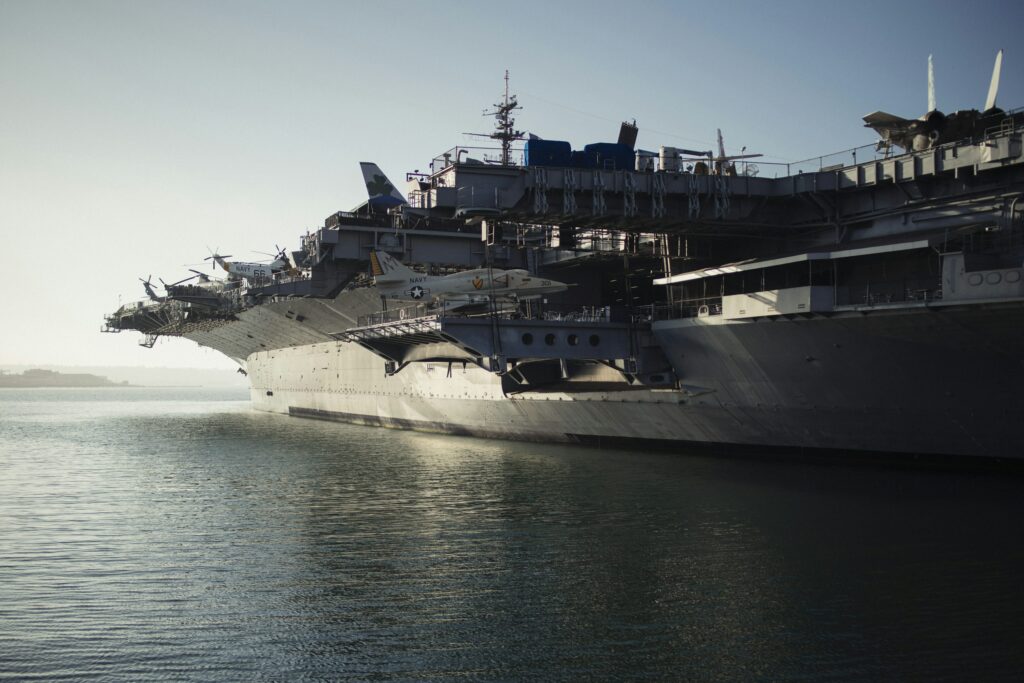
Despite a drug-war pretext, Washington’s rhetoric and targeting signal regime-change aims in Venezuela. Rubio and others tie the anti-cartel push to ousting Maduro, citing links to Tren de Aragua and the “Cartel of the Suns”; the U.S. doubled the bounty on him to $50 million as lawmakers say it’s “time for him to go.” With U.S. forces massing off Venezuela and reported strike plans U.N. experts deem unlawful, Caracas has mobilized militias, while Colombia’s Petro condemned deadly boat incidents that Washington brushed off—setting the stage for a showdown.
Targeting cartels on Mexican soil
At the same time, Washington’s other front in this war lies to the north – in Mexico, where powerful cartels like Sinaloa and Jalisco New Generation (CJNG) operate. U.S. leaders increasingly describe these Mexican cartels in the language of war. “The drug cartels are waging war on America – and it’s now time for America to wage war on the cartels,” President Trump declared. He and his allies blame Mexican cartels for flooding the U.S. with deadly fentanyl and other drugs that kill over 100,000 Americans per year. Now, emboldened by this wartime framing, the Trump administration has been laying the groundwork for direct military action against cartel targets inside Mexico – a move unprecedented in U.S.-Mexico relations.

The legal predicates are already in place. In early 2025, President Trump signed an executive order designating Mexico’s major cartels as Foreign Terrorist Organizations (FTOs). At least six Mexican cartels – including the Sinaloa and CJNG cartels – are now officially labeled “terrorist” groups by Washington. This FTO designation isn’t just symbolic; it activates the framework for using U.S. military force. As one congressional memo outlined, the president’s directive authorizes the Pentagon to “use force in self-defense” against these cartels and even to target their assets as “unlawful combatants.” In effect, the U.S. government has treated the cartels as military enemies, not just criminal gangs, thus setting the stage for armed intervention on Mexican soil.
Behind closed doors, concrete plans for striking in Mexico are being drawn up. U.S. defense and intelligence officials have quietly discussed options for “deadly strikes” against cartel leaders and drug labs inside Mexico. This could involve special operations raids or aerial drone attacks on high-value targets. Notably, NBC News reported in April 2025 that the administration was considering drone strikes on Mexican cartel targets, prompting alarm in Mexico City. And according to leaks, an Oval Office meeting in October even produced a “list of hard targets” in Mexico (and Colombia) to expand the anti-cartel war beyond Venezuela. In other words, the U.S. has identified specific cartel sites inside Mexico that could be hit if the green light is given.
American officials have been testing the waters with Mexico’s government – and meeting stiff resistance. Mexico’s President Claudia Sheinbaum (who took office in late 2024) has flatly rejected any U.S. military operation on her country’s soil. “The people of Mexico will not, under any circumstances, accept intervention or interference from abroad,” President Sheinbaum declared in response to the drone strike rumors. In April, after the NBC report, she publicly warned that unilateral U.S. action “would not resolve anything” and is categorically unwelcome. Mexican leaders have even proposed enshrining a constitutional amendment to bolster sovereignty protections. This nationalist backlash reflects a broad consensus in Mexico: the trauma of past U.S. interventions (from 19th-century invasions to the DEA’s contentious role in the Drug War) makes the notion of U.S. airstrikes or troops on Mexican soil politically toxic.
Yet Washington has signaled that Mexico’s consent is not a prerequisite. Trump officials pointedly refuse to rule out unilateral action. Secretary of Defense Pete Hegseth has stated that “all options are on the table” regarding strikes in Mexico. And Trump himself – when asked if he’d send U.S. special forces into Mexico against cartels – responded, “Could happen. Stranger things have happened.”. This was on day one of his new term, underscoring how serious the idea is at the highest level. In Congress, Republican hawks are rallying support for an Authorization for Use of Military Force (AUMF) specifically against the Sinaloa and Jalisco cartels. Representative Dan Crenshaw, for instance, has pushed legislation to “allow the use of military force” against those cartels in retaliation for the fentanyl onslaught.
Mexico has intensified its cartel crackdown—raids and mass extraditions—earning U.S. praise while drawing a firm line on sovereignty: no strikes without consent. Washington says it currently lacks authority to hit targets in Mexico, yet expanded drone and spy-plane surveillance and quiet force positioning suggest active target-scouting as advisers keep strike plans opaque.
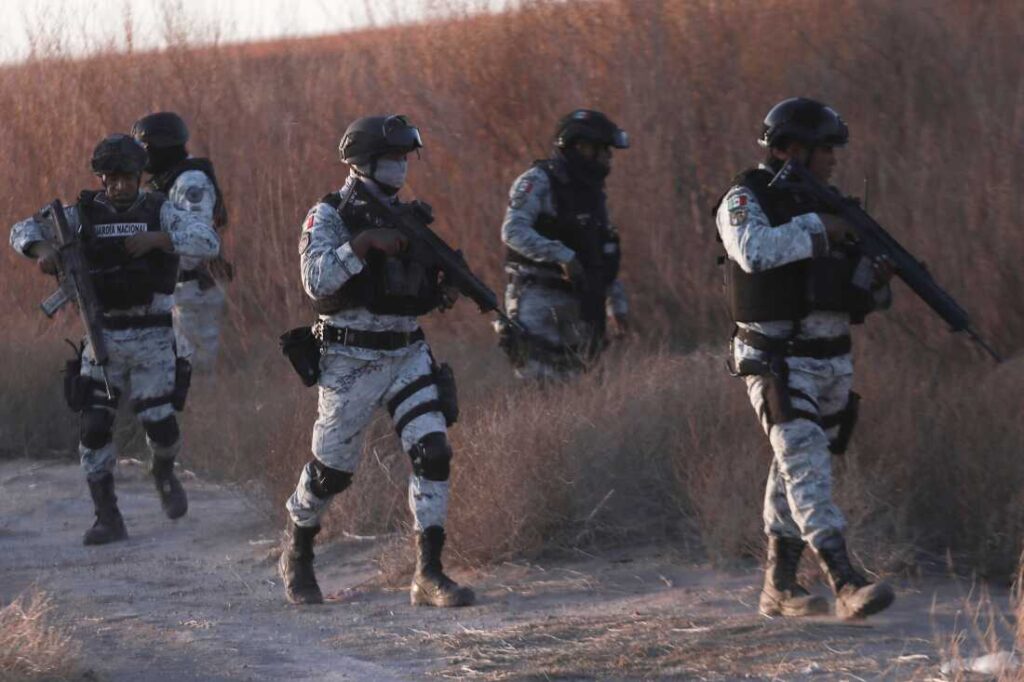
A year of covert preparation
While carrier groups and Marines deploy visibly, an equally important war effort has been unfolding in the shadows. Over the past year, U.S. intelligence agencies and special forces have been laying the groundwork for a broad cartel war across the Western Hemisphere. Multiple reports and leaks reveal a concerted CIA-led campaign to map, infiltrate, and weaken cartel networks in anticipation of open conflict.
In Mexico, the CIA has been deeply involved in hunting top cartel capos side-by-side with Mexican units. A Reuters investigation uncovered that for years the CIA has run “covert operations” in Mexico to track and capture major drug lords. This includes CIA-vetted units inside the Mexican military – elite teams hand-picked, trained, and funded by the CIA with Mexico’s secret permission. These shadowy units, screened via U.S. polygraphs, have planned or executed a majority of the high-profile narco arrests in recent years. For example, when Mexican forces captured Ovidio Guzmán López (son of El Chapo) in Sinaloa in early 2023, the CIA provided crucial intelligence and targeting packages to locate him. They even flipped an informant in Ovidio’s inner circle and helped direct Mexican helicopter gunships during the raid. Such operations, once kept very quiet, underscore that U.S. intelligence has been intensively mapping cartel leadership and strongholds – effectively scouting the battlefield ahead of any overt U.S. strikes.
Since President Trump’s return to power, these efforts have kicked into overdrive. CIA Director John Ratcliffe (a Trump appointee) made countering Mexican cartels a “top priority from day one” to support Trump’s orders to “end narco-trafficking.” The CIA has reallocated personnel and resources accordingly, even creating a new centralized “Americas and Counternarcotics Mission Center” to focus on the cartel threat. Notably, top veterans of the War on Terror have been reassigned to this mission.
CIA Deputy Director Michael Ellis openly stated the agency is applying its “find, fix, finish” manhunting model – honed against Al Qaeda and ISIS – “and now we are going to be taking that machine and turning it on the cartels.”. In practical terms, that means drone surveillance, signals intercepts, informant networks, and strike coordination are being marshaled against cartel targets much as they were against jihadist militants. Indeed, the CIA has increased drone overflights in Mexican airspace in recent months, augmenting the U.S. military’s own surveillance of cartel territory. Counterterrorism analysts and special ops planners are jointly refining target lists – whether drug labs hidden in the Sierra Madre or cartel convoys in the desert – so that if political approval comes, actionable intel is ready for precision strikes.

U.S. intelligence has quietly built a year-long dossier on Venezuelan narco networks—especially the military-linked “Cartel de los Soles”—despite Caracas expelling the DEA. SOUTHCOM ramped up reconnaissance and interdictions, mapping supply chains from Andean producers through Venezuela to Mexico. This intel now underpins rapid boat strikes and readies potential surgical land targets.
The Venezuela–Mexico narco nexus
Why is Washington treating Venezuela and Mexico as interconnected battlegrounds in the fight against cartels? U.S. officials have made the case that the flow of drugs and the networks of organized crime bind the two countries’ crises together – and that to stop one, you must confront both. The logic is that Venezuelan actors enable the upstream production and transit of cocaine (and other narcotics) that ultimately empower the Mexican cartels delivering those drugs to the United States. In essence, Venezuela is a major source and haven, while Mexico is the distribution hub; attacking only one end of this pipeline would leave the problem half-solved.
There is evidence of a dark symbiosis between Venezuelan elements and Mexican cartels. U.S. narcotics experts note that for decades, Venezuela has served as a transit hub for Colombian cocaine heading north. After Venezuela cut off cooperation with the U.S. Drug Enforcement Administration in 2005, trafficking through the country surged. By the 2010s, an estimated 8–10% of all U.S.-bound cocaine was departing via Venezuela and the Caribbean. Traffickers use Venezuelan airstrips and ports to move drugs into Central America, where Mexican cartels then take over smuggling routes to the U.S. border. American military officials have pointed out that “there’s a lot of cocaine leaving Venezuela to the world market,” much of it ultimately headed to the United States. In short, Venezuela is a vital chokepoint in the cocaine supply chain that enriches Mexican cartels.
Moreover, U.S. intelligence has identified direct collusion between Venezuelan power brokers and Mexican cartel operatives. A decade ago, the United States publicly warned that “generally permissive security forces and a corrupt political environment have made Venezuela one of the preferred routes of cocaine trafficking”. Venezuelan officials and military brass allegedly turned a blind eye (or actively assisted) as transnational criminal groups set up shop on their soil. Those groups included Mexican cartel emissaries. For example, elements of the Sinaloa Cartel – the same syndicate poisoning American streets with fentanyl – have been known to operate from within Venezuela.

Even the now-fragmented Los Zetas cartel had a presence there, using Venezuela as a staging ground. It’s also telling that Tren de Aragua, the Venezuelan gang Trump designated as a terrorist group, has extended its tentacles into Mexico’s migrant-smuggling routes in recent years. In sum, U.S. officials argue that Venezuela’s regime, corrupt military “cartel,” and allied criminal gangs form one end of a narco-trafficking axis, while the big Mexican cartels form the other end. Money, drugs, and weapons flow between them, forming a hemispheric web of organized crime.
By this reasoning, any effective offensive must strike both ends of the narco-network. Hitting the Mexican cartels alone addresses the supply on U.S. borders, but if the source pipeline in South America remains intact (Colombian coca processed and exported via Venezuela), new traffickers will replace those taken down. Conversely, targeting Venezuelan narco-militaries and cocaine shipments at the source won’t halt the deadly fentanyl and methamphetamine production inside Mexico that also ravages American communities.
Thus, Washington is preparing to fight on two fronts, viewing it as one war. “President Trump sees Venezuela and Colombia as direct threats … because they house narco-terrorist organizations,” Lindsey Graham explained, “and [he] told me… he plans to expand [operations] from the sea to the land.” In the same breath, Graham emphasized “we’re not gonna sit on the sidelines” as cartel drugs kill Americans; “we’re gonna blow them up and kill the people who want to poison America,” whether at sea or on land. His comments underscore that the battlefield spans from the Andean jungles to the Mexican sierras. Indeed, the administration’s own target folders compiled this fall reportedly list sites “inside Venezuela, Colombia, and Mexico” as part of a single campaign.


